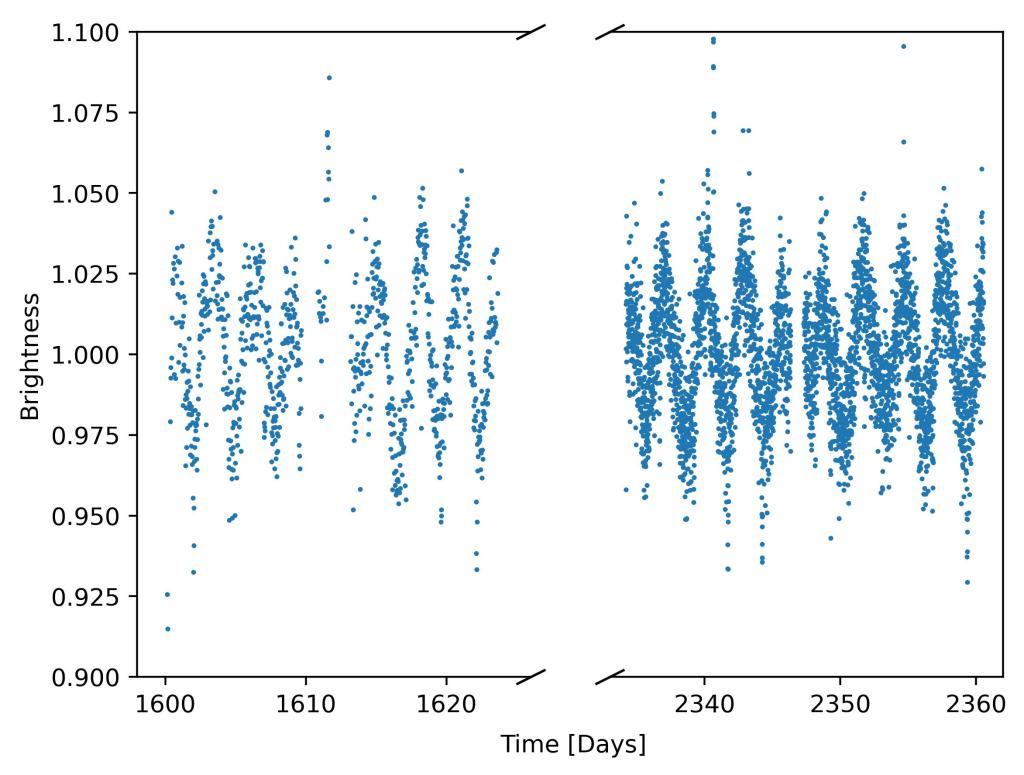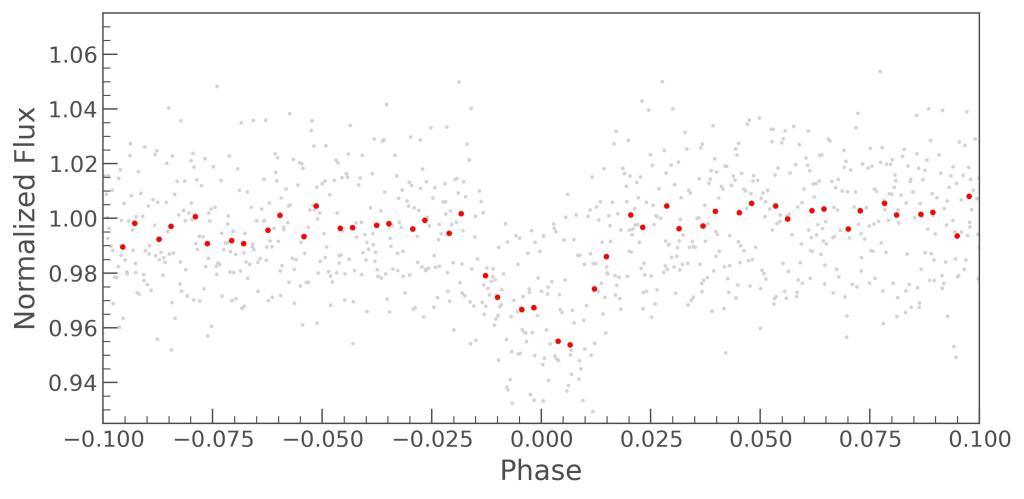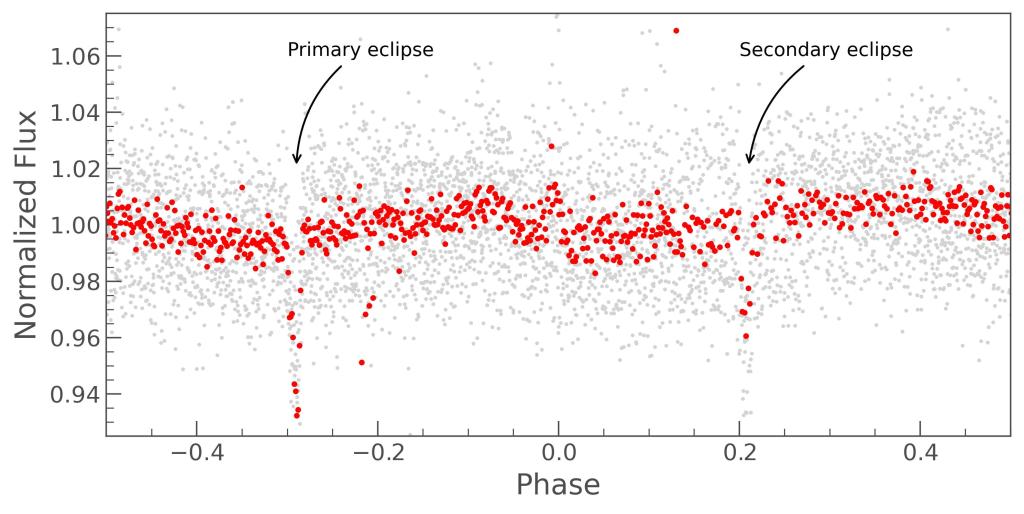From subject to candidate to planet: Checking in with TESS
Once we have identified an object as a potential planet candidate from the NGTS data, the first step is to check whether we also see the transit signal in data from the Transiting Survey Exoplanet Satellite (TESS). Let’s walk through an example of one of the subjects that we initially thought was a planet candidate, Subject 69693101. The Planet Hunters NGTS light curve for this object looks promising. Also the odd/even and secondary eclipse (not shown) light curves look fine too and when we analysed the NGTS data we estimated a radius of 1.35 Jupiter radii for the orbiting body, which is big but not so big that we would immediately rule it out.


Therefore, we decided to check the TESS data for this star. Luckily TESS has observed this star in two “sectors” which means we have approximately 2 months worth of data to look at (TESS observes a region of the sky, called a sector, for a month at a time before moving on, but has is now revisiting regions to gather more data). The plot below shows the light curves for both sectors with the x-axis showing time in days since a fixed date. (Astronomers like to use a unit called Julian Days which is the number of days since January 1st 4713 BC, but this number is huge so we subtract standard values to make the numbers more manageable, in this case we’ve subtracted 2457000 days).

At first look, this star looks to be very variable, possibly due to some intrinsic stellar variability although periodic signals like this can be as a result of it being a binary star system. The first step is to try phase folding the data onto the period found by NGTS. This is a process where we take each section of the lightcurve that corresponds to (what we believe to be) one orbit of the candidate, centred on the transit, and plot the data on top of each other. This means that the transits should all be in the middle of the plot. The plot below shows the data folded onto the 2.51 day orbit that NGTS detected, with grey points showing the raw data and red points showing the data binned in 10-minute averages.

This looks like a clear transit signal, although the apparent variability of the star made me cautious when looking at this. Therefore, I tried folding the data to twice the detected period and, voila, we can clearly see two transits of differing depths which tells us that this is indeed an eclipsing binary system and not a planet candidate. While it’s unfortunate that this particular candidate isn’t a planet, it does mean we can focus our time and resources on more promising candidates that might really be planets!

5 responses to “From subject to candidate to planet: Checking in with TESS”
Trackbacks / Pingbacks
- - February 19, 2023

I learnt few new things from your post today!
Thank you so much.
Glad it was useful!
Its great to see what happen to the data, its encouraging to know that what we do makes a contribution
What is the TIC number of this star?